


Copyright@2011 University of South Carolina

Controlled self-assembly
•
1D Assembly: Virus Falls Into Line
TMV head-to-tail assembly
With the rod-like tobacco mosaic virus (TMV) as the template, 1D polyaniline/TMV composite nanofibers with narrow dispersity, high aspect ratio and high processibility can be readily prepared via a hierarchical assembly process. The length of the composite fiber can be as long as 10 ¦Ìm. The composite nanofibers are monodisperse in width with an average diameter of ~21 nm determined by synchrotron small angle X-ray scattering experiments. Upon variation of the reaction conditions, the morphology and electrical properties of the TMV/composite fibers can be controlled.
With the rod-like tobacco mosaic virus (TMV) as the template, 1D polyaniline/TMV composite nanofibers with narrow dispersity, high aspect ratio and high processibility can be readily prepared via a hierarchical assembly process. The length of the composite fiber can be as long as 10 ¦Ìm. The composite nanofibers are monodisperse in width with an average diameter of ~21 nm determined by synchrotron small angle X-ray scattering experiments. Upon variation of the reaction conditions, the morphology and electrical properties of the TMV/composite fibers can be controlled.

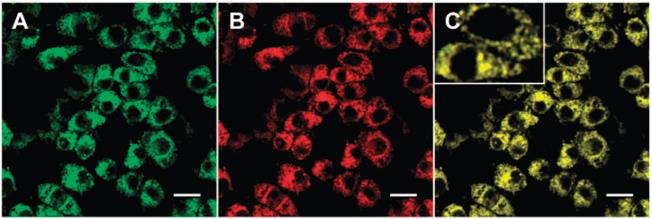
1D conducting nanowire
1D conducting polyaniline and polypyrrole nanowires can be readily prepared via a hierarchical assembly process. Scanning spreading resistance microscopy (SSRM) was performed in conjunction with regular atomic force microscopy (contact mode) to obtain simultaneous electronic and morphological information of the TMV nanofibers.
This synthesis discloses a unique way to produce composite fibrillar materials with controlled morphology and great processibility, which can promote many potential applications including electronics, optics, sensing and biomedical engineering.
1D conducting polyaniline and polypyrrole nanowires can be readily prepared via a hierarchical assembly process. Scanning spreading resistance microscopy (SSRM) was performed in conjunction with regular atomic force microscopy (contact mode) to obtain simultaneous electronic and morphological information of the TMV nanofibers.
This synthesis discloses a unique way to produce composite fibrillar materials with controlled morphology and great processibility, which can promote many potential applications including electronics, optics, sensing and biomedical engineering.
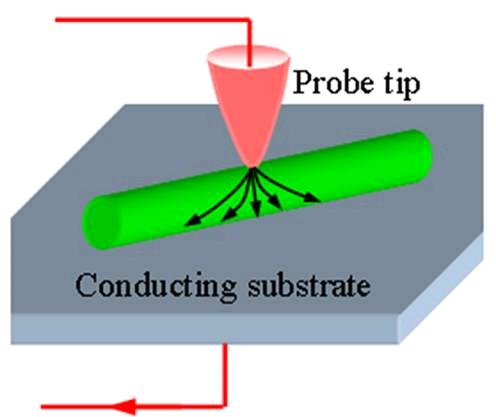
•
2D assembly of BNPs at interface
The self-assembly of nanoparticles at fluid interfaces, driven by the reduction in interfacial energy, has been well established. Bionanoparticles, such as cowpea mosaic virus (CPMV) and turnip mosaic virus (TMV) can self-assemble as a monolayer at liquid-liquid interface. Upon crosslinking, a mechanically robust membranes of bionanopartilces was readily obtained.
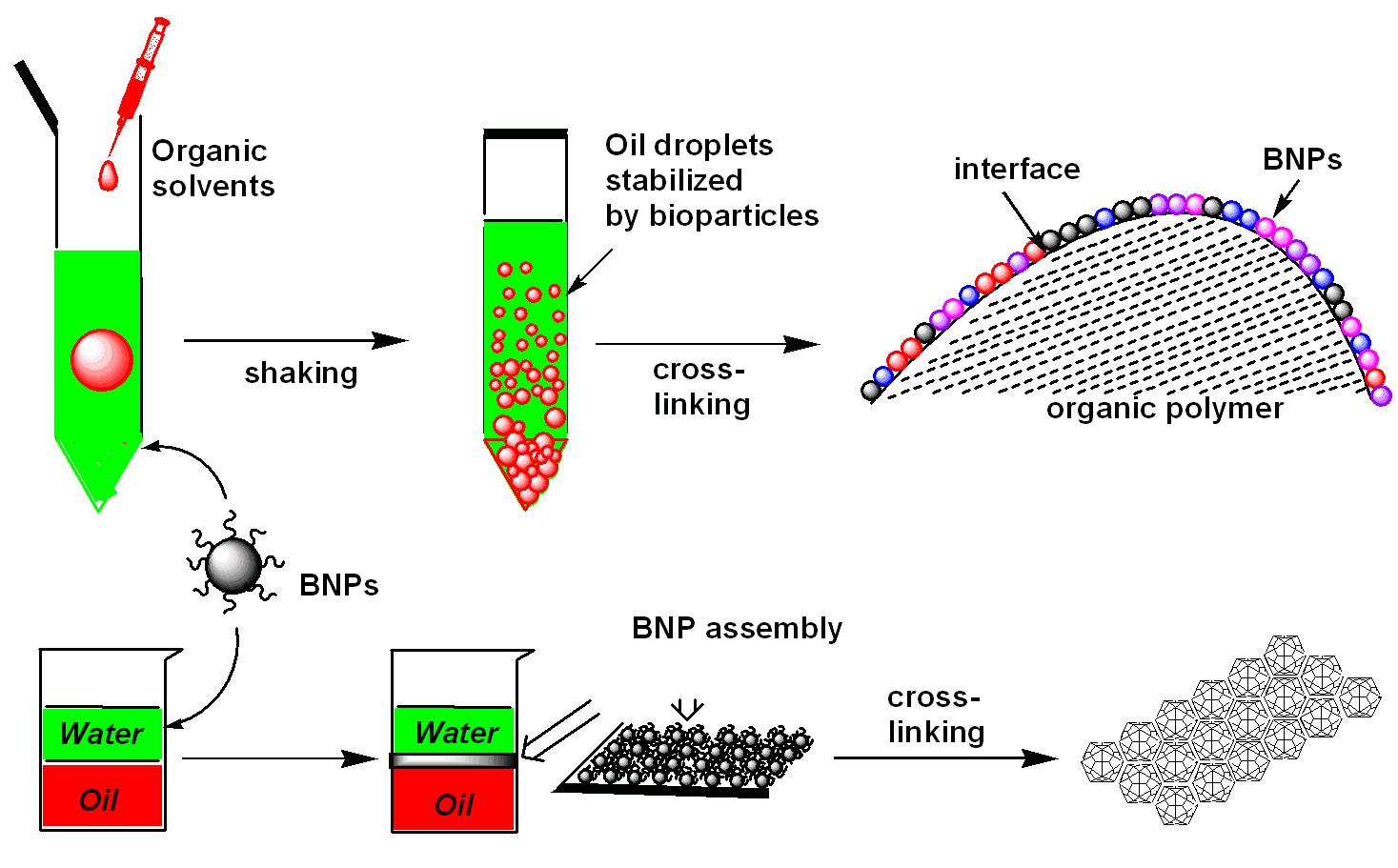
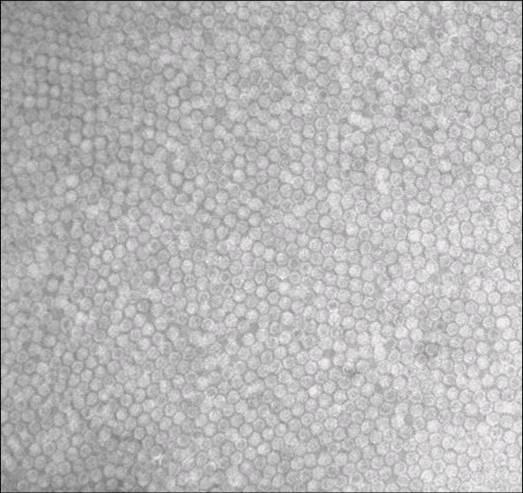
Soft Matter, 2009, 5, 4951-4961
Langmuir 2009, 25, 4979-4987
Langmuir 2009, 25, 5168-5176
Angew. Chem. Int. Ed. 2005, 44, 2420
Science China. 2010, 53, 1287-1293
Langmuir 2009, 25, 4979-4987
Langmuir 2009, 25, 5168-5176
Angew. Chem. Int. Ed. 2005, 44, 2420
Science China. 2010, 53, 1287-1293
•
3D Core-Shell Assemblies of BNPS and Polymer
Raspberry-like bionanocomposites can be fabricated via a facile approach using BNPs hybridized with different kinds of polymers, such as poly(4-vinylpyridine) (P4VP), poly(2-vinylpyridine) (P2VP), and poly (¦Å-caprolactone)- b-poly(2-vinylpyridine) (PCL- b-P2VP). The size and coverage of the core-shell biocomposites can be controlled by varying the ratio of BNP and polymer.
Small 2008, 4, 1624-1629
Chem. Commun. 2009, 2869-2871
Chem. Mater. 2009, 21, 1046-1050
Science in China B: Chemistry, 2010, 53, 71-77
Microscopy Research and Technique, 2010, 74, 636-641
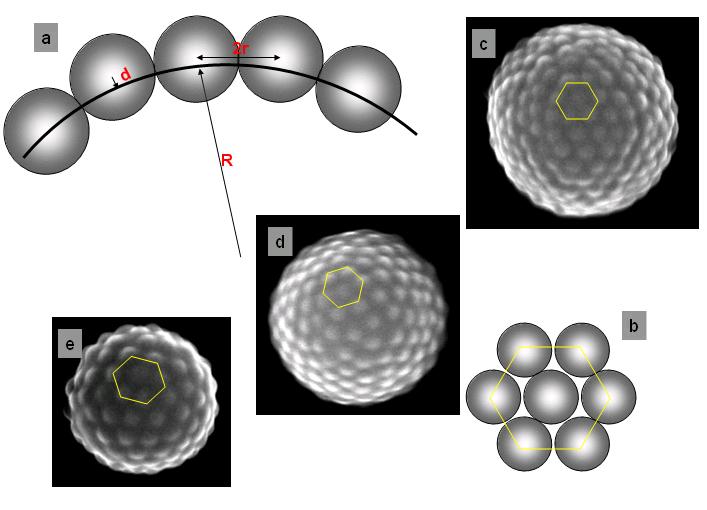
•
Self-assembly of rod-like bionanoparticles in capillary tube
Diverse patterns result from drying a solution of tobacco mosaic virus (TMV) particles in a glass capillary tube (see AFM images). The hierarchical assembled structure can be controlled by the particle concentration, the drying process, and the surface properties of the interior surface of the tube. The internally patterned tube can potentially be applied to directing the orientation of rat aortic smooth muscle cells.
Angew. Chem. Int. Ed. 2010, 49, 868-872
Angew. Chem. Int. Ed. 2010, 49, 868-872
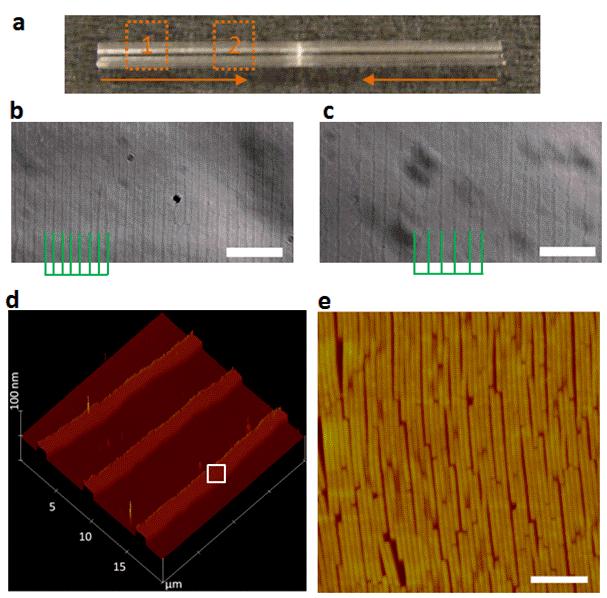
Chem. Commun., 2006, 3019
NanoBiotechnology, 2007, 3, 31
Langmuir 2007, 23, 6719
J. Mater. Chem., 2009, 19, 2841
NanoBiotechnology, 2007, 3, 31
Langmuir 2007, 23, 6719
J. Mater. Chem., 2009, 19, 2841

Nano Lett. 2007, 7, 3729-3733

Moreover, we have successfully developed DOX-loaded pH-responsive FA-M13-PCL-P2VP nanoassemblies that are stable under physiological conditions but dissociated under an acidic environment. DOX-loaded particles show noticeable antitumor selectivity compared to free DOX. Reduced cellular uptake in HMSCs compared to KB cells demonstrates the selectivity of the particles. The method of preparation of nanoassemblies provides a simple way of controlling particle size, encapsulating hydrophobic drugs, and targeting specific tumor cells. These features demonstrate that such nanoassemblies are attractive for the design of antitumor agents and can provide a new strategy for future in vivo use.
Nano Research, 2011, 4, 483-493


